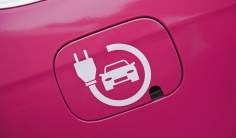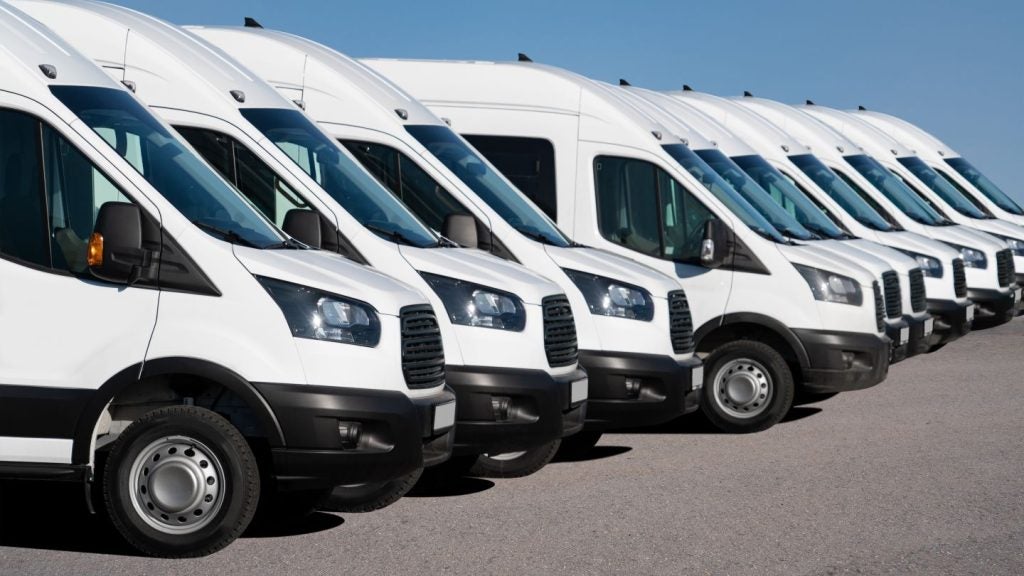
While AFVs currently hold only a small market share, double-digit growth means that, slowly but surely, non-combustion cars are moving into the mainstream. Saad Ahmed spoke to key motor finance figures about the rise of AFVs, their impact on car values, and how they could change the industry
The slow and steady rise of alternative fuel vehicles (AFVs) saw their share increase to 3.5% of the UK new car market in September, according to the SMMT, up from 2.6% in September 2015.
While at this stage it’s far too soon to declare the end of an era for traditional cars, AFV development has made rapid progress in recent years.
Rise of the AFVs
The growth in AFVs has been mostly driven by their increasingly being seen as a viable option. Primarily, this has favoured electric vehicles (EVs), which Alphera says makes up a third of the AFV market.
Publicity has also played a part, with Elon Musk’s Tesla models and technology making the news – whether positively, or negatively in the case of the autopilot crashes.
How well do you really know your competitors?
Access the most comprehensive Company Profiles on the market, powered by GlobalData. Save hours of research. Gain competitive edge.

Thank you!
Your download email will arrive shortly
Not ready to buy yet? Download a free sample
We are confident about the unique quality of our Company Profiles. However, we want you to make the most beneficial decision for your business, so we offer a free sample that you can download by submitting the below form
By GlobalDataThe increased awareness of Tesla and the technology in its vehicles has also had the effect of highlighting relative technological inefficiencies and inadequacies in other, more affordable electric vehicles.
Rupert Pontin, director of valuations at Glass’s UK, says the limited range of the old guard of EVs presented a problem for many prospective consumers – particularly those living outside urban areas. Steve Gowler, former MD of RCI Financial Services, calls this “range anxiety”.
According to Alphera, range and charging were the primary factors that individuals gave for not purchasing EVs. Citing a 2015 survey by the Department for Transport in the UK, Alphera notes that 75% of licence holders were put off EVs for those reasons.
The report says: “Driving licence holders reported that the most important factors putting them off buying an EV were recharging (39%), and the distance travelled on a battery (36%).”
Pontin says: “Until recently, the range was very low in relation to day-to-day usage. For many users having an all-electric vehicle that only has 60-80 miles as a range becomes a problem when it comes to daily usage.”
The Tesla Roadster, Musk’s first vehicle, began production in 2008, and had a range of 244 miles. The Nissan Leaf, the best-selling EV to date, premiered its first model in 2010, with a range of 73 miles.
The latest Nissan Leaf offers 170 miles, and the next model is expected to reach 214 miles. Pontin cites the Volkswagen iD, due for a 2020 release, and a range of 370 miles on a single charge, as another example of ranges improving.
In simple terms, the increased profile of Tesla, and by extension other EVs, has caused car manufacturers to up their game, lifting the industry to a level where the traditional constraints of low range are being driven out.
Pontin adds: “With the Renault Zoe at 250 miles, the BMW i3 at 190 miles, and the Nissan Leaf at 170 miles, those cars all of a sudden have started to become really quite relevant.”
He argues that environmental concerns take a back seat to reality and the usability of EVs. As issues of feasibility become ironed out, Pontin explains that users are now able to take advantage of providing a lower carbon footprint and lower running costs without compromising their travel habits.
He says: “A lot of people could use that to and from work, and therefore have the benefits of low running costs and not giving out pollution. The more we see ranges increase, the more of an appeal there will be to the electric vehicle. These are really good, usable vehicles.”
Constraints
Gowler says infrastructure constraints are also starting to be addressed: “Things that have constrained the growth of electric vehicles in particular in the UK have been the lack of charging infrastructure.”
In contrast to vehicle ranges, this is a more obvious disadvantage for city dwellers without access to their own driveways and garages for home charging. Alphera says a lack of knowledge about where charging points are, and a lack of local access are major deterrents to EV ownership.
Pontin tells Motor Finance that though EV charge points are increasing in number, they may fail to satisfy increased demand as rising vehicle ranges boost EV popularity further.
He says: “They quote 12,000 charging stations in the UK now, so it has been growing significantly, and that is a good thing, but probably not really as good as it should be at the moment.”
He adds, however, that as range increases, the need for more charging points will become less urgent, and the ‘overlapping issue’ will “resolve itself”.
What’s your type?
AFVs currently available include EVs, hybrid vehicles, and those powered by hydrogen fuel-celled cars.
These are types which are in the mainstream consciousness, and plug-in EVs are leading the charge in adoption by private users. The Toyota Prius is perhaps the best-known AFV, and is a familiar sight on many roads owing to its prolific use by ridesharing company Uber.
Hybrid vehicles benefit from lower benefit-in-kind taxation, which Pontin says is behind hybrid registrations for company users.
However, as the range of EVs continues to increase, some may argue that the sun has set on the hybrid’s time in the market. Alphera says diesel-electric hybrid car sales fell by 60% in March 2016, and Pontin declares that the hybrid was doomed to become a “passing phase”, eventually supplanted by EVs as technology continues to improve.
Pontin explains: “[Hybrids] are a transitional technology, a stepping stone to take the manufacturer through to full electric vehicles, or perhaps to fuel cell vehicles.”
In particular, he warns, hybrids will not fare well on the used car market.
He says: “[If] you go back a few years, you have diehards such as Toyota which very successfully made a lot of money from good hybrid vehicles. But, in the last 12 months, every manufacturer is putting some form of plug-in hybrid into the marketplace.
“Some of them will only do 20 miles. When that comes to the used market in two or three years’ time when you’ve got [long-range] electric vehicles, who’s going to want one of those cars? It’s not a long-term solution to our transport requirements.”
A new approach to motor finance?
The rise of AFVs has the potential to change the way the motor finance industry operates. The growing popularity of personal contract purchase as an option seems to lend itself to electric vehicles.
Specifically, the flexible ownership nature of the package may be suited to a market where a new, updated and improved model of a vehicle may be released every other year.
Gowler says that while PCP was not peculiar to electric vehicles – more than 75% of all new car finance is through this method – the ability to shift with the technology seems to suit the market.
Gowler says: “In two or three years something comes along with a much better range, so for people who have taken a [Renault] Zoe on PCP or leasing, it’s much more flexible for them to come out of that and come into a new vehicle.”
The evolving technology involved in the electric and AFV car markets, in which greater range and features are constantly being developed, creates a more practical reason for changing cars, and PCP empowers consumers to trade up.
“People have different motivations [for choosing PCP],” Gowler explains, adding that some customers consider not just the affordability of monthly payments, but also the future and ease with which they could trade up once the PCP deal has reached full term.
Gowler warns that, as with any finance agreement, cashing in on a PCP deal before the end of the term would result in a settlement figure, equal to “the outstanding payments discounted for early settlements”.
He adds that because most new cars – regardless of engine type – typically last 36 months with their initial owners, what happens at the end of the agreement is more important.
PCP’s flexibility would allow for drivers to be released from the car at the end of the term, and free to choose a new vehicle that may be more technologically advanced.
Pontin says that one issue which may arise with PCP in the AFV space is in the calculation of future values.
He says: “The difficulty with PCP is that the vehicle must have a future value, and that is problematic.”
He adds that a hire purchase agreement may be the simpler solution from the finance provider’s perspective.
Hire purchase, Pontin says, would guard the dealer against residual value risk, but added the caveat that such deals would be short-term, and require a “healthy” deposit.
For consumers this issue does not arise, as the nature of PCP means, at the end of the term, they will no longer have to worry about selling the car. On the dealer side and for the secondary market, however, this may be a concern.
Leased batteries in some EV models make this value determination more difficult.
Added complexity
The use of battery leasing in many EV models adds a layer of complexity to the process.
In some instances, this results in different motor finance products being applied to different parts of the car. While the battery may be leased, the shell of the vehicle could be offered on a variety of different products.
Pontin argues that this allows vehicles to be more affordable. He explains: “Renault went down the battery-leasing route. We lease the batteries to all Renault Zoe customers, and then the shell can be funded in all sorts of different ways.
“You could have a PCP for the shell and a battery lease as well, and that makes it very affordable.”
Gowler adds that affordability was behind Renault-Nissan’s decision to use battery leasing in its EVs, but notes that it also shielded consumers from value risks associated with the battery.
He says: “We can do a lease on the battery, depreciate it for 10 years, and that then makes it very affordable. It also means the customer hasn’t got the residual value risk on the battery; that’s taken away from them.”
When asked about how leasing the battery and shell separately could affect resale, Gowler admits: “It does make it a bit more administratively complicated. When customers comes to dispose of the vehicle they might own the shell, but they don’t own the battery.”
Gowler plays down these complications, saying that dealers have been able to successfully part exchange batteries and retail EVs as they would a conventional used car.
“It’s just a little bit more complicated from an administrative point of view, but it generally works okay.”
Despite the shells and batteries often being on different finance products, they cannot currently be separated. Gowler says that a user could not change the battery without changing the shell.
The implication of this is that the development of a better range can only be realised by purchasing a new vehicle, and not simply switching in a newer model of battery.
He says: “In terms of changing the battery and the shell, you can’t do that at the moment. You can’t take the old battery out of the [Zoe] and put the new one in.
“It’s nothing to do with the financing, it’s purely due to technology. It wouldn’t fit in the other car. You’d have to trade in your old Zoe and replace it with a new one.”
Pontin adds that the industry must move away from battery leasing, as it not only complicates financing, but may confuse prospective purchasers in the used market.
He says: “The complication of having a leased battery as well will probably mean the market will shift away from that. Dealers and auction companies find it very difficult because they have to describe the vehicle.
“I am aware of a number of occasions where dealers have bought a number of these, only to find once they’ve bought them, and put them into stock, they’ve been told they need to pay the lease on the battery as well.”
The future
According to Alphera, two main factors will influence demand for AFVs, and cause an increase in their market share: restrictions over carbon emissions and a “recovery” in the price of oil.
Alphera says: “When oil prices recover, EVs will once again become an attractive alternative because of their fuel economy. The high cost of fuel – until recently – helped drive consumers towards EVs, and this will happen again as fuel prices inevitably creep back up.
“Furthermore, the UK has strict CO2 emissions targets in place, which is another important factor in the context for a healthy market for alternative fuel vehicles.”
Given the outlook for AFVs, particularly EVs, the motor finance market will need to adapt.
A flexible approach to PCP deals, perhaps with the easing of term limits, would allow drivers to switch more easily to the latest models.
This may have the effect of keeping the market buoyant, and increasing the availability of EVs in the used market, which may help address some of the issues which arise.
As technology increases in sophistication and government policy adapts, AFVs look set to increase in popularity, and motor finance must keep up.







